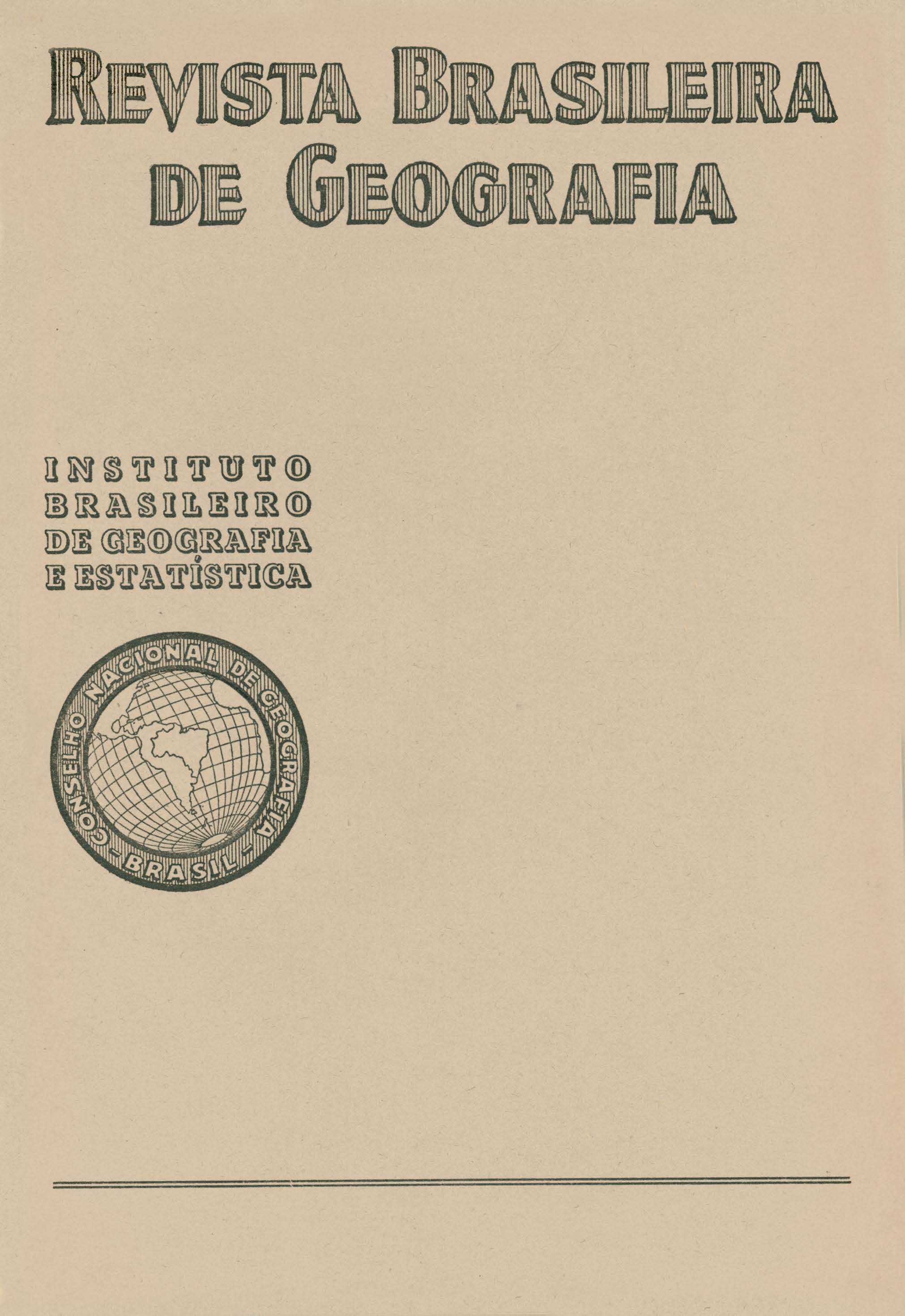Geografia dos transportes no Brasil
o Meio
Palavras-chave:
Geografia econômica, Geografia física, Geografia humana, Transportes, ColonizaçãoResumo
The engineer Moacyr M. F. Silva, Technical Adviser to the National Council of Geography, begins the publicatlon of a work under the tltle "Geography of Transporta in Brazil", and in this number he devotes himself to the study of the Brazilian physlcal environment.
Initially he points out the fact the agricultural, pastoral and industrial products find their way to the centres of consumptlon and commerclal interchange under the "law of gravity" just llke water flowing down from the stream sources to the valleys and from these to the outlets.
Thus he examines preliminarlly the Brazlllan relief which, in short, conslsts of an extenslve central plateau bounded on the Atlantlc slde by hlgh ranges and on the inland slde by "chapadões" tablelands sloping towards the two great depressions, the Amazonian basin, in the north, and the River Plate basin, in the southeast, constltuted by the hydrographic system Paraguay-Paraná-Uruguay.
The writer makes a few remarks about the central plateau which, geologically, according to Gerber and Elias Beaumont, is the oldest region in the world that, under the geographical point of view, is very interesting. It is the Brazillan orographlc knot as an lntersection polnt of the mountains of Brazil. It ls a hydrographic centre, from which water courses flow north an the Amazonian watershed, east on the eastern watershed, and south on the Rlver Plate watershed.
The wrlter terms thls plateau the "Roof of Brazil", following the geographers who named the Pamir plateau, in India, "World's Roof", and sets farth a tetrahedral conceptlon of the Brazllian relief, representing it schematlcally similar to a triangular, irregular, truncated (on the plateau) pyramld with one of the faces slanting to the Amazon, the other to the Atlantic and the thlrd to the River P!ate region.
He emphasizes the predominating rôle of the face towards the Atlantic Ocean, along the coast strip in which is located the greatest part of the Brazillan population. He studies the Brazilian coast, dlvlding it lnto three types, the low, plaln northern coast, bearing from N. W.S. E.; the eastern coast, from N.-S. aud S. W.-N. E., intersected with barrlers, dunes, and reefs; the southern coast, from N. E.-S. W., fringed with creeks, sandy beaches, lslands." He analyses the ports, and classlfles them under the crlterlum of draught and access to vessels distinguishing as the only first-class ports Rio de Janeiro and Recife, the only ones that permit the entrance of large transatlantics.
The writer, flnaly, thinks it is imperative for the geographlcal study of transportatlon in Brazil to consider the subdivision of its immense territory (8,511,189 Km2) in its various regions, whereln natural and human phenomena take on different aspects. He presents brlef!y the known divlsions: engineer André Rebouças's gold and iron central divislon in 10 zones: Amazonian, Parnaíba, Ceará, Paraíba do Norte, São Francisco, Paraíba do Sul, Paraná, Uruguay; Elisée Reclus's in 8 regions: Amazonian, Tocantins, Equatorial coast, São Francisco, Paraíba, Paraná, Uruguay, Mato Grosso; Lionel Wiener's In 8 regions: Amazonian, Ceará, Northeast, Baia, Rio de Janeiro, São Paulo, Paraná, Rio Grande do Sul; Ezequiel Candido de Souza Brito's in 6 produclng zones of rubbler and Brazll nuts, of sugar, tobacco, cocoa, maniçoba and cotton, of coffee and dairy produce, of matte, pine and oats, and of wheat, vine and cattle, and the central zone; Alberto Rangel's In 4 large regions, the Swampy land of the North, the. Northeast, Sea coast ranges, Central lands: Inspetoria Federal das Estradas, in 4 reglons, North, Northeast, Southeast, and South; Professor Delgado de Carvalho's in 5 regions, Amazonian (Pará, Amazonas, and Acre), Northeast (Maranhão, Piauí, Rio Grande do Norte, Ceará, Paraíba, Pernambuco, Alagoas), Eastern Brazil (Sergipe, Bala, Minas Gerais, Espírito Santo, Rio de Janeiro, Distrito Federal), Southern Brazll (S. Paulo, Paraná, Santa Catarina, Rio Grande do Sul), Central Brazll (Mato Grosso and Goiaz).
The writer adopts Delgado de Carvalho's classiflcation, to which he ad.ds three "Transltlon reglons": Maranhão and Piauí, lylng between the Amazon and the Northeast; Sergipe anel. Baia, between the Northeast and the Eastern Brazll; São Paulo, between the Eastern and the Central Brazil.






